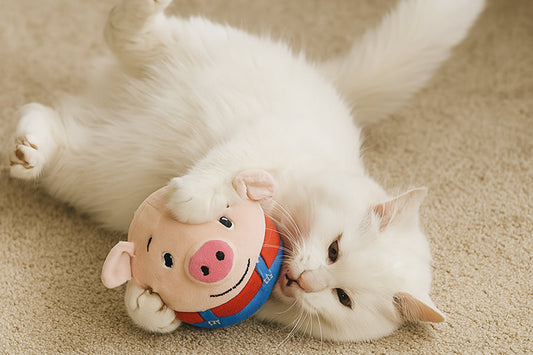Do Dogs Smile or Is It Just Us Reading Dog Emotions?
Ever wondered, do dogs smile like humans — or are we simply projecting our feelings onto them? At PetToyBarn.com, we break down the science of smiling dogs, decode their facial expressions, and help you understand what true canine happiness looks like.


Smart Dog Toy Ball – Electronic Interactive Moving & Bouncing Pet Toy for Puppies and Cats, USB Rechargeable
Select Your Option
Introduction
There’s something about the way your dog looks at you — mouth open, eyes soft, tail gently wagging — that makes you think, “Wow, they’re smiling at me.” But do dogs smile in the same way humans do, or are we simply interpreting their expressions through our own emotions?
Dogs communicate a lot through body language, and understanding their facial expressions can help you spot genuine happy dog signs while avoiding common misreadings. At PetToyBarn.com, we’ll show you how to tell the difference between real canine joy and other expressions, so you can better understand — and respond to — your furry friend’s emotions.
Why Understanding Dog Emotions Matters
Misreading your dog’s expression could mean missing signs of discomfort or stress. By learning to distinguish between a real smile and a stress grin, you can better meet your dog’s emotional and physical needs.
Recognizing happy dog signs also helps you know what activities, environments, and interactions your pup enjoys most — allowing you to build a stronger bond.
How to Spot a Genuine “Dog Smile”
While dogs don’t smile in the same way humans do, they can make facial expressions that resemble a smile — and sometimes, these truly do signal happiness.
Signs of a Real Happy Dog Expression:
-
Relaxed, slightly squinted eyes
-
Open mouth with lips pulled back loosely
-
Tongue lolling comfortably
-
Loose, wiggly body posture
💡 Pro Tip: Look at the whole body, not just the mouth. A smiling face with stiff posture could mean tension, not joy.

Reading Dog Emotions Through Multiple Cues
A dog’s “smile” is just one part of a bigger emotional picture. To accurately read dog emotions, you need to look at other signals.
Body Language Clues:
-
Tail: A slow, side-to-side wag often signals contentment; a stiff wag may mean alertness.
-
Ears: Relaxed ears indicate comfort; pinned back ears can be fear or submission.
-
Posture: A comfortable stance shows relaxation, while leaning back or cowering signals unease.
By combining these clues with facial expressions, you can tell whether that “smile” is genuine or a stress signal.
Encouraging More Happy Expressions
The best way to see more genuine smiles is to create an environment that nurtures joy and comfort.
Ways to Boost Your Dog’s Happiness:
-
Play daily with interactive toys from PetToyBarn.com
-
Offer safe spaces where your dog can relax without disturbance
-
Keep training sessions positive and reward-based
-
Maintain a routine for meals, walks, and rest
When dogs feel safe, loved, and engaged, you’ll naturally see more of those relaxed, happy expressions.

Conclusion
So, do dogs smile? In their own way, yes — but it’s not always what it seems. True canine happiness shows up in relaxed faces, soft eyes, and comfortable body language. By reading the full picture, you can respond to your dog’s needs and create more moments worth smiling about.
Visit PetToyBarn.com for toys, treats, and gear that bring out the best in your furry friend.


